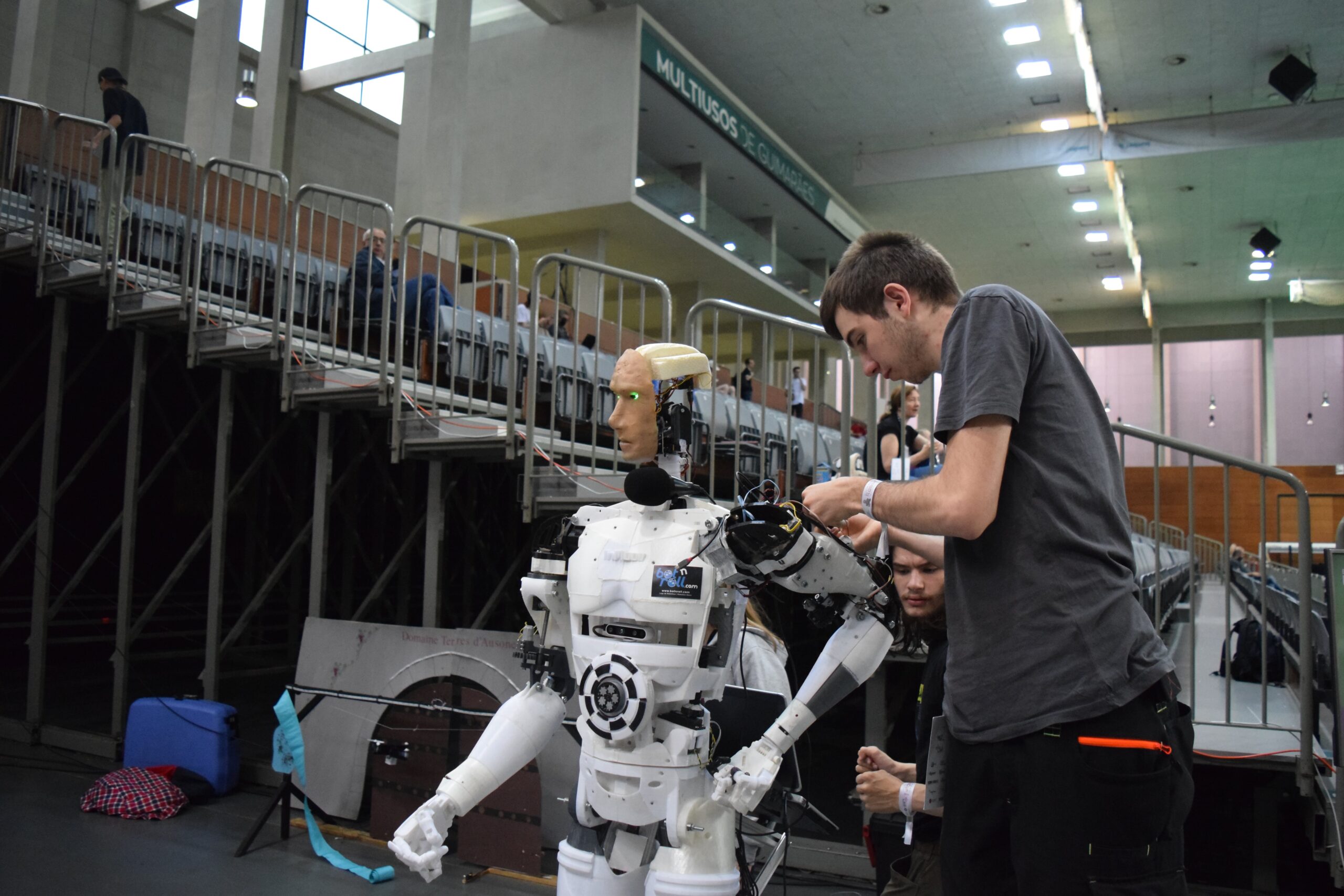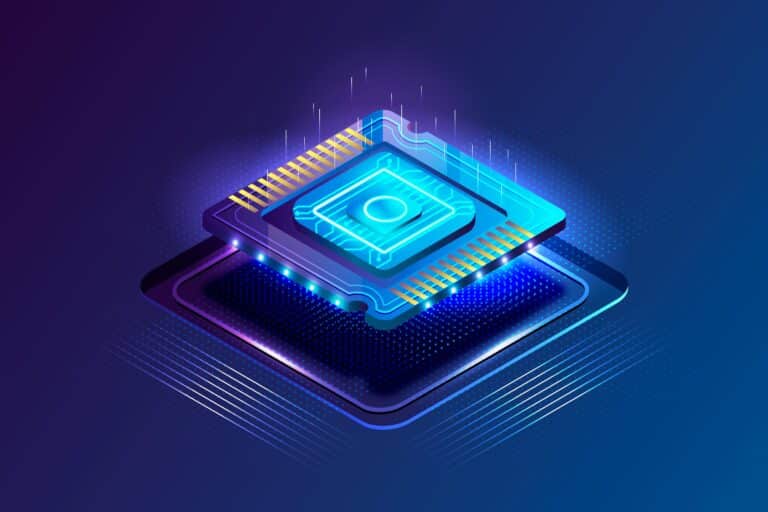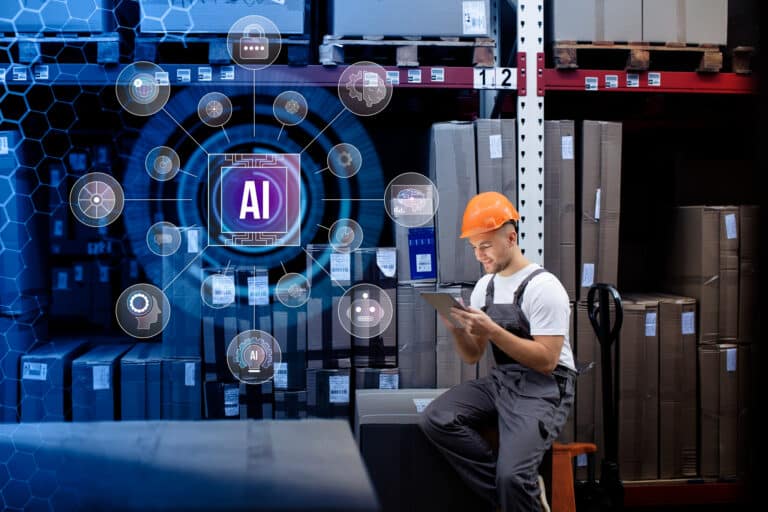AI and Human Augmentation
Combining artificial intelligence (AI) with prosthetics, human physiology, and brain-computer interfaces (BCIs) is a new technological advancement called human augmenting. This emerging field promises to increase human capabilities beyond the limits of nature. It allows people to overcome physical limitations, improve cognitive function, and attain unprecedented levels of efficiency. The article below will examine the interplay between AI and human enhancement. We will explore its potential applications, issues, and ethical issues surrounding this revolutionary technology.
Enhancing the Physical Ability through Artificial Intelligence-Powered Prosthetics
One of the more important uses of AI in human enhancement is in creating modern prosthetic joints. Thoughts, though prosthetics have basic functionality, often lack the mobility of natural legs. However, by integrating AI algorithmic and sensory systems into modern prosthetics, they can better replicate the human body’s complex motions.
Artificial Intelligence-powered prosthetics employ algorithms that learn to recognize signals from the user’s muscles or nerves, allowing for the prosthetic device’s natural operation. The systems adapt and learn to the user’s actions over time, allowing customized functionality and a better user experience. In addition, AI algorithms can predict and anticipate the user’s intentions and allow for more fluid and natural interactions with prosthetic limbs.
Additionally, AI enables prosthetic limbs to provide feedback on sensory sensations to the user, emulating the sense of touch and proprioception. The feedback loop increases the sense of being in touch, sensing the cognitive strain of using a prosthetic device and ultimately enhancing the user’s overall quality of living and autonomy.
Cognitive Enhancement via Brain-Computer Interfaces
The brain-computer interfaces (BCIs) are a new frontier in human augmentation that allows direct interaction between the brain and external systems or devices. Utilizing AI technology, BCIs can decode neural signals and convert them into actions or commands, which opens up the possibility of improving cognitive functions and controlling external devices using the power of thinking.
AI-powered BCIs could allow those with motor or physical disabilities to gain mobility and autonomy by controlling assistive devices like robotic exoskeletons or computer interfaces by utilizing the brain’s activity. Furthermore, using neurofeedback and brain stimulation methods, BCIs can improve cognitive abilities, including memory and decision-making.
In addition, AI-driven BCIs allow for new forms of human-computer interaction. They allow seamless interaction between human brains and virtual or augmented environments. Integrating neuroscience technology and AI technology can have profound implications for gaming, education, and healthcare and opens up new opportunities for human expression, creativity, and exploration.
Ethical Considerations and Societal Implications
The potential benefits of AI-driven human augmentation are immense. However, they also pose serious ethical and social issues that must be addressed. This includes issues concerning privacy, autonomy, consent, and fair access to technology for augmentation.
Security concerns stem from the sensitive nature of data generated by AI-powered augmentation devices like biological or neural signals. Protecting the privacy and security of these data is essential to ensure that no one can access or misuse it.
The autonomy and the consent of individuals are vital concerns, particularly when it comes to the application of invasive augmentation techniques like neuro implants or brain stimulation devices. Individuals should have complete control over their bodies and the decisions they make regarding procedures for augmentation, with clear consent procedures established.
Additionally, ensuring equal access to augmenting technologies is vital to stop exacerbating existing inequalities and disparities in healthcare and society. Access to the most advanced prosthetics, BCIs, and other enhancement technologies shouldn’t be restricted by socioeconomic status, geographic residence, or other variables.
What exactly is human augmentation? And what is it, and how can AI contribute to it?
Human augmentation is the application of technology to improve human capabilities beyond the limits of nature, including physical capabilities, cognition, cognitive functions, and sensory perception. Artificial Intelligence (AI) plays a key part in human augmentation by permitting the integration of AI algorithmic systems and algorithms that are compatible with the human body’s physiology and prosthetics, as well as brain-computer interfaces (BCIs). AI algorithms improve the function and flexibility of prosthetic limbs. They also detect neural signals within BCIs for more intuitive control of devices from outside and improve cognitive function through neural stimulation and training methods.
What prosthetics use AI, and what are the benefits?
Artificial Intelligence-powered prosthetics employ machines’ neural algorithms and sensors to detect signals generated by the motor or sensory nerves, providing an intuitive control and adaptive function. AI-powered prosthetic limbs can replicate the complex movements of natural limbs precisely and offer sensory information to users, improving their sense of being in the present and reducing cognitive burden. The advantages of AI-powered prosthetics include increased mobility, agility, and quality of life for people who have lost limbs or impairment.
How do you define brain-computer interfaces (BCIs), and how can AI algorithms increase their capabilities?
The brain-computer interfaces (BCIs) facilitate direct communications between the brain and external systems or devices, allowing users to operate devices and applications through their brain activities. AI algorithms boost BCIs by processing neural signals with greater accuracy, allowing for the precise operation of aidive technology and virtual environments. AI-driven BCIs also enhance cognitive capabilities through neurofeedback or brain stimulation strategies. These can offer the potential for benefits to people suffering from motor disabilities, paralysis, or cognitive impairments.
What ethical issues are involved with AI-driven augmentation of human beings?
Artificial intelligence-driven human enhancement raises serious ethical issues regarding privacy and autonomy, consent, and access to justice. Privacy concerns arise from storing and collecting sensitive information, such as biological or neural signals from augmentation systems. Informed consent of individuals and their autonomy is vital, especially when it comes to surgical augmentation that involves implanted neural cells or other brain stimulators. Furthermore, equitable access to these technologies should be ensured to avoid escalating gaps in healthcare and society.
How can we address artificial intelligence-driven human enhancement’s moral and social implications?
Addressing the ethical and societal impacts of AI-driven human augmentation requires a multidisciplinary approach that involves health experts and ethicists. A stringent set of regulations and guidelines should be formulated to protect privacy, guarantee informed consent, and ensure equitable access to technologies for augmentation. Engaging with the public is crucial to increase awareness, promote transparency, and establish confidence in AI-driven systems for augmentation. In addition, continuous research and collaboration are required to limit the potential risk and increase the value of human augmentation while preserving ethical values and principles.
Conclusion
Integrating AI with human physiology, prosthetics, and brain-computer interfaces can improve human capabilities and enhance the quality of life for those who are disabled. Prosthetics that are advanced to allow for greater mobility and feedback on sensory input to brain-computer interfaces that allow direct interaction between brains and devices outside Artificial Intelligence-driven technology for augmentation are changing our future in human-machine interactions.
However, harnessing the full power of artificial intelligence-powered enhancement will require addressing ethical, legal, and societal issues to ensure technology is responsibly implemented, developed, and utilized by encouraging interdisciplinarity and stakeholder involvement to harness the transformational power of AI to improve human capabilities while preserving ethical values and principles. As we navigate this constantly changing landscape, it’s essential to approach human enhancement with care, understanding, and a determination to improve the dignity of humans and their well-being.







